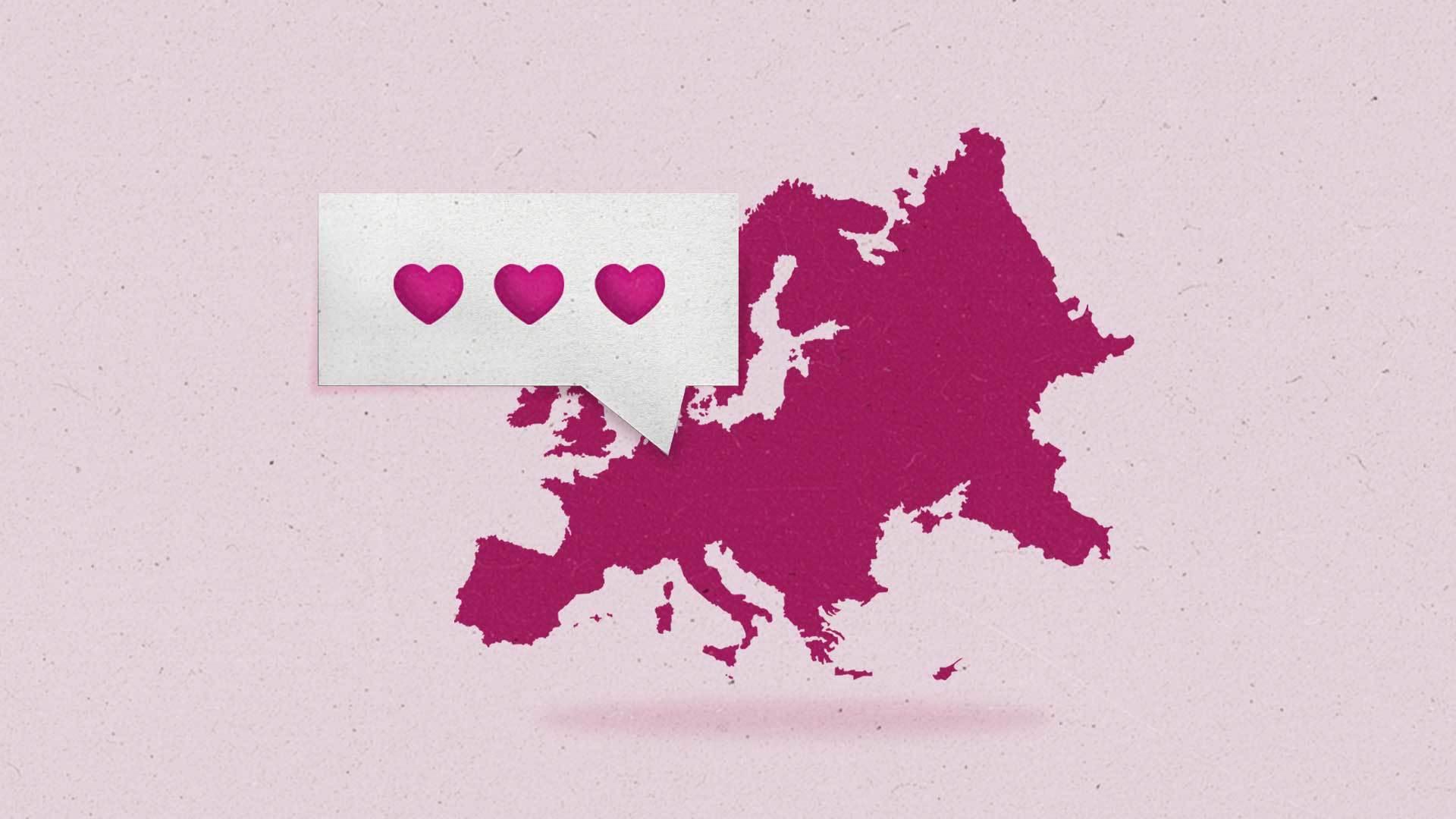Situationships and solitude: How brands are advertising for Europe’s changing dating culture

Europe is transforming. The population across the continent is shrinking. By 2050, the continent’s median age will have increased 4.5 years from 2019. The average age of marriage is also creeping closer to 35 for both men and women.
Many young Europeans are foregoing traditional dating labels in favor of more casual arrangements like "situationships," and same-sex marriage is now legal in 17 European countries.
These demographic changes are likely to significantly alter how brands advertise to the continent’s youngest generations: millennial, Gen Z, and Gen Alpha. Their values and aspirations often differ from their predecessors’, especially when it comes to the realms of dating, family, and love.
Those differences, more marked in certain cities and regions, make Europe an ever more complex terrain for marketers.
“There’s a huge push from those young consumers to see not just your happy married couple being represented, but they want different types of relationships to be represented, especially when it comes to advertising,” says Antonin Ficatier, editorial director for Western Europe at YPulse, a research firm focused on Gen Zers and millennials.
Advertising for the future
Brands tapping in to these new dating and demographics paradigms might be surprised at young Europeans’ openness toward social changes in their millennia-old cultures. But Ficatier says they can be just as open to new definitions of dating and love as their American counterparts — and expect brands to be more open as well.
“Based on our data, there’s actually not much difference between young consumers in Western Europe and North America, when it comes to their willingness and interest in seeing more inclusivity in advertising,” says Ficatier.
Some European brands are aligned with this sentiment. Examples of advertisers pushing conventional boundaries abound across the continent, from Les Chocolats des Français’ “Very Spicy Campaign” to ITA Airways’ “Love is in the Airplane Mode.” These campaigns take a playful, cheeky tone to encourage viewers to see love and sex through a new lens, one less “formal” and more in tune with younger generations.
“For brands with relevant products, it’s almost impossible not to be a part of this conversation because you’re going to be left out of the zeitgeist, especially with Gen Z. They are very interested in relationships and how they are evolving as a response to other societal changes,” says Ottavio Nava, regional lead EU area at agency We Are Social.
Many young Europeans are also finding themselves in single-person households well into their 30s. This rise in singledom also means a more fragmented market made up of consumers with varied tastes and needs — and less money to spend. A recent study found that the average single person in the U.K. is £10,000 ($11,400) worse off per year than someone in a married couple.
Nonetheless, catering to singles requires a mindset shift from brands. “Increasingly, time is also being factored in as a resource. So you find people saying, ‘If I’m alone, and I learn to be alone, I have more time to do what I want in my life,’ meaning more time to think about themselves and consume products that are related to that,” says Nava.
But while it can be helpful to rely on generalized insights to understand Europe better, some of the most impactful advertising taps into each nation’s differences to create campaigns that truly resonate. These clashes of culture, in which advertising becomes part of the national conversation, are to be found in European countries with a higher preference for traditional-marriage roles.
Brands join the front lines in Europe’s culture clashes
Greek chocolate brand Lacta, owned by Mondelēz, is no stranger to contentious ad campaigns. The brand has made bold marketing moves, from the “Act for Love” ad in 2019, which depicted dozens of couples of various ethnicities and sexual orientations, to last year’s poignant “Don’t Ever Leave Me” ad, which shone a spotlight on an increase in domestic abuse.
But these risks have paid off: following the release of “Act for Love,” even amid threats of boycott on social media and angry reactions on TV, the chocolate brand said sales increase by 13.5 percent, buoyed by support for its powerful message. Lacta followed up the year after, with the “See the Love” campaign, inviting viewers to “look beyond stereotypes” as it depicted couples of all kinds gaining acceptance in society.
This call for more acceptance also extends to women’s roles in society. The rate at which increasing numbers of women are joining the workforce in Europe is uneven among member states, with countries like Poland and Italy seeing a 15 percent and 20 percent gender employment gap, respectively, whereas this gap sits at around 5 percent for France and Norway.
In response to this, Polish jewelry brand Yes released an ad last year tapping in to women’s growing confidence in choosing a life for themselves, in a country where preference for traditional-marriage roles is dropping rapidly.
“If you can put a dent in culture with your work and get people talking, that’s when you know the work is powerful and you’re making a statement,” Jason Harris, CEO of agency Mekanism, told The Current in a recent podcast.
These differences in acceptance and openness among European countries are why it pays for brands to remember that Europe remains a complex and nuanced market, with substantial differences at the national, regional, and even city level, says Nava. But ultimately, cultural differences and the growth of a diverse dating landscape can provide inspiration for advertising that sets a brand apart from the rest.
“Leading up to Valentine’s Day, we’ll see obviously a lot of ads about committed relationships. But brands could also use this opportunity to celebrate all types of relationships. That’s really what young consumers are asking,” says Ficatier.
Subscribe to The Current
Subscribe to The Current